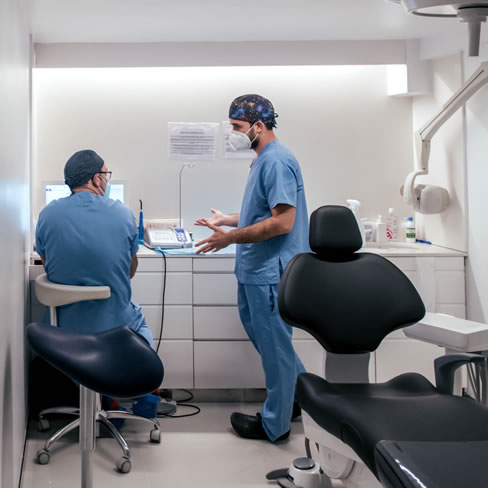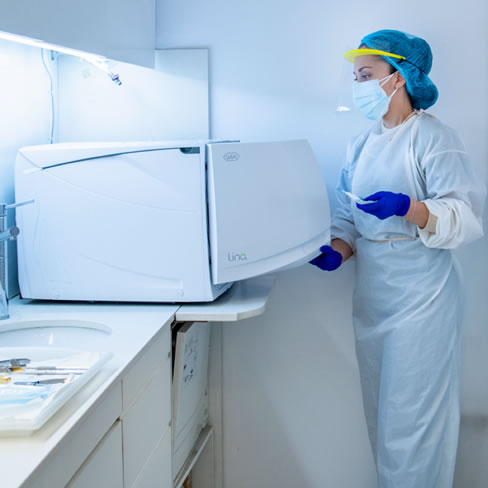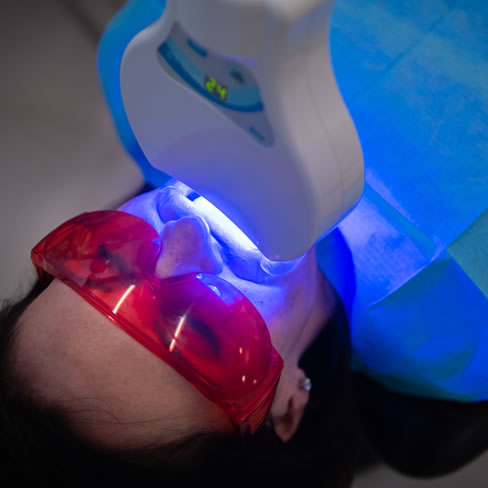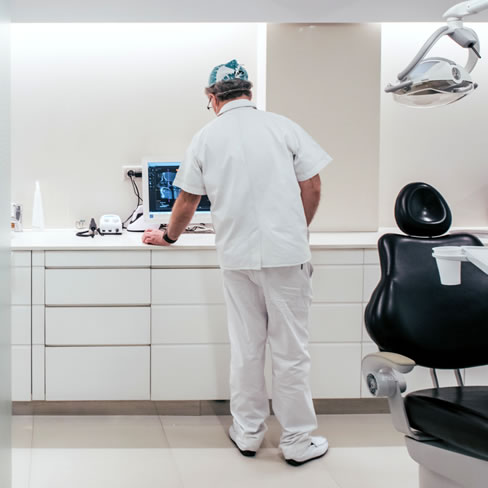
Our main objective is excellence and quality in everything we do.
Advanced technology is essential to make the most accurate diagnoses and improve our patients’ treatments. We highly value people’s time, and technology helps us to optimize all our processes.
At Clínicas DEN, our specialists are undergoing continuous training, because advances in dental technology are part of our DNA.
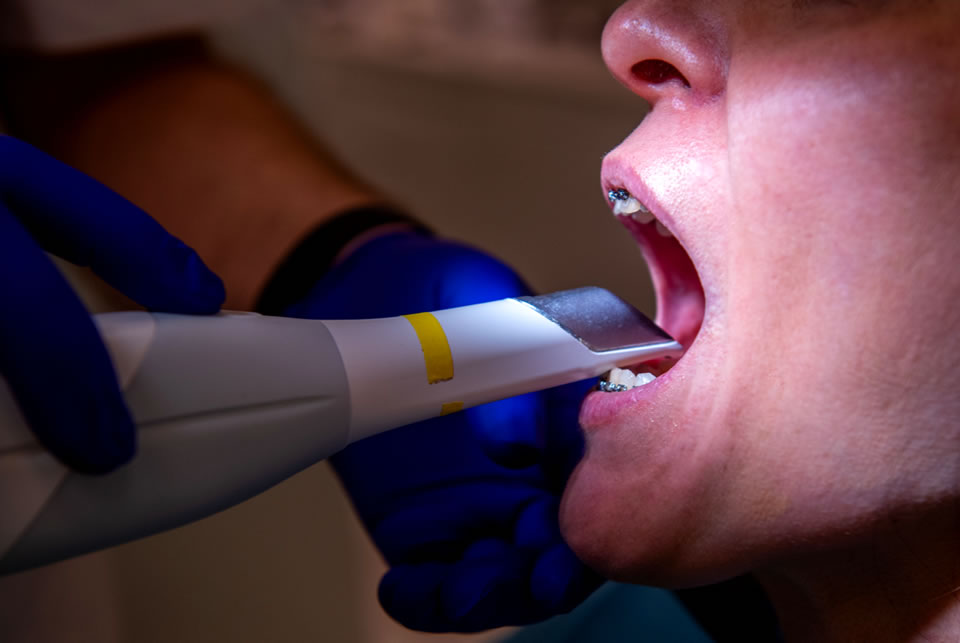
Cad/Cam – Digital technology
CAD/CAM technology was the great leap from analog to digital dentistry. It is used for the manufacture of structures in a standardized and robotized way, combining computer-aided design with manufacturing through a milling machine.
Using CAD/CAM technology we can fabricate crowns, fixed or removable customized prostheses in metal-free aesthetic materials. We can also fabricate complete restorations and correct the angulation of connection with the implant in restorations where the case requires it.
This technology consists of three processes: first, a digital scanning process of the patient’s mouth, either by means of an intraoral scanner or by taking a physical impression that is subsequently digitized; second, a software-driven design of the restoration; and third, robotic milling of the restoration.
The latest advance in CAD/CAM technology is the design of surgical guides for implant placement; these guides are designed from CAD/CAM software and manufactured with 3D printing, which generates a highly precise surgery without trauma for the patient.
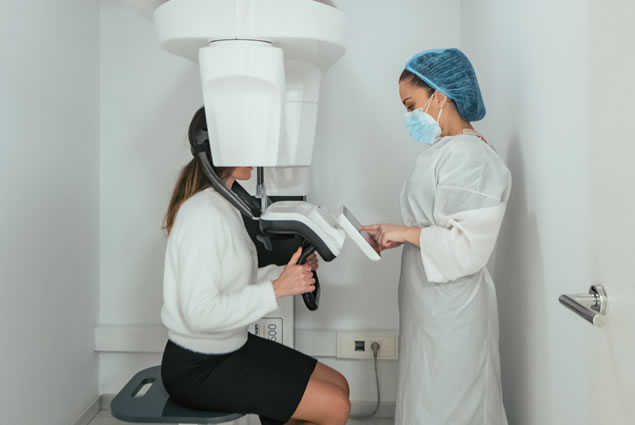
Carestream 9600 CBCT Sophisticated radiology system
At Clínicas Den we have the CS 9600, a sophisticated radiology system that is indicated to improve the scanning experience for our patients.
Thanks to its intelligent extraoral imaging system, we can achieve much more accurate scans of the exams in the first attempt, without the risk of repetitions.
It combines state-of-the-art 2D and 3D panoramic technology, resulting in the best dental and maxillofacial radiographs.

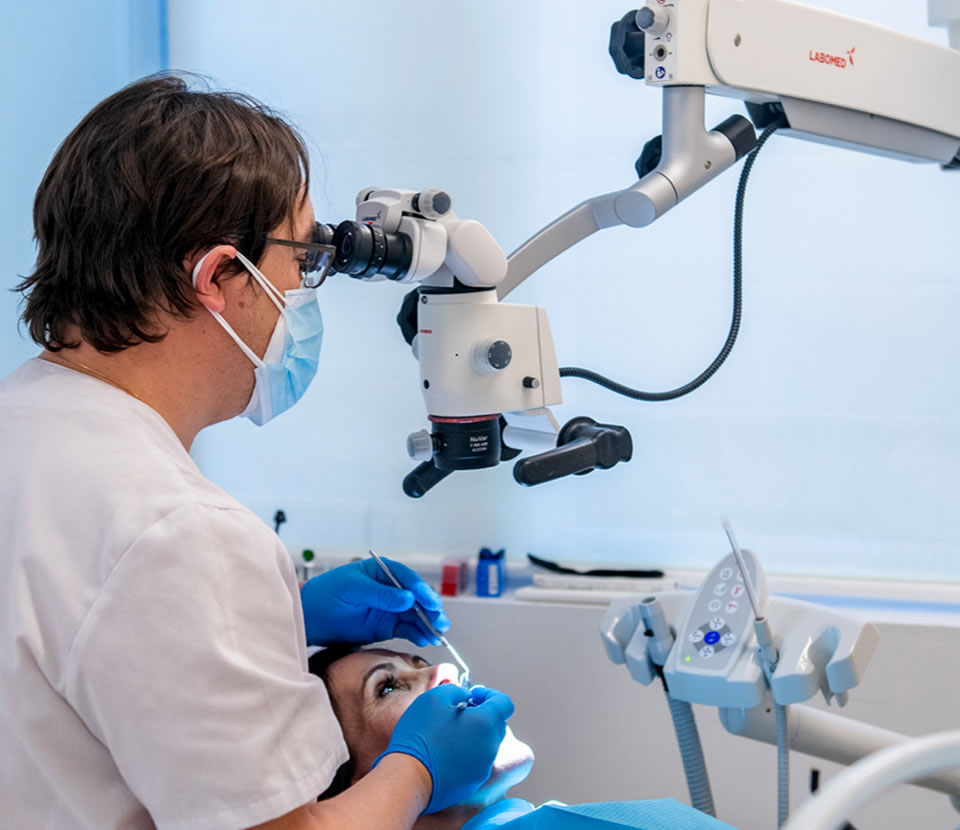
Endodontic microscope
With the help of the microscope we are able to treat structures that were previously not very visible to the human eye. We can make diagnoses and treatments with much greater precision, and achieve more predictable results.
Over time, the microscope has become a common tool for a variety of dental procedures, from routine crown preparations to the location of canals or the removal of dental pulp in endodontic treatment.
The presence of microfractures or longitudinal fractures in dental pieces are not easy to detect if not thanks to the microscope. Thanks to this advanced technology we can diagnose these painful pathologies, elaborating and applying the best possible treatment.
The microscope allows us an optimal visualization of the smallest details, thanks to the coaxial illumination of difficult to access areas and magnification.
In addition, we can use it in any dental specialty: endodontics, aesthetic dentistry, prosthodontics, implantology, periodontics and orthodontics, thus improving the diagnosis and corresponding treatment of each discipline.
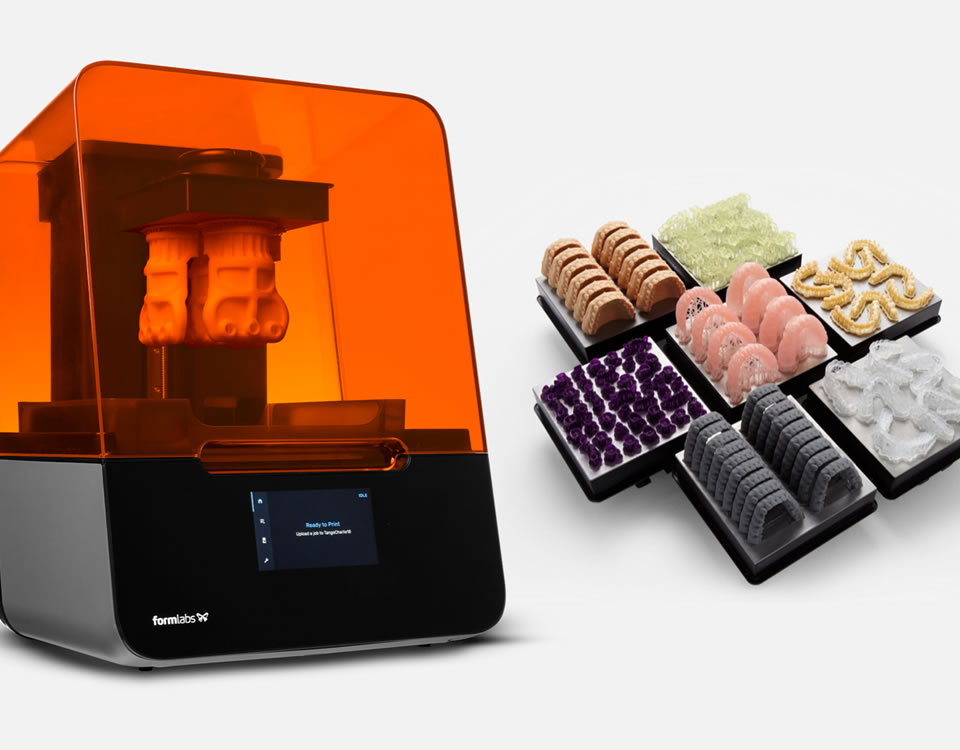
3D Printer + Intraoral Scanner Advanced
The Form 3 is a state-of-the-art 3D printer optimized for biocompatible materials. The ecosystem provided by the Formlabs brand facilitates the manufacture of dental materials, making workflows much faster, accurate and reliable, leaving them just a few clicks away.
On the other hand, in our dental clinic in Barcelona we have an advanced intraoral scanner, which is a great revolution in dental treatments.
The first step for the realization of any type of dental treatment or restoration is in the diagnosis. And for this, thanks to the intraoral scanner, we take a digital image of the mouth that then goes to our 3D printer.
These 3D digital impressions provide us with optimum precision, improve clinical results and reduce the need for subsequent adjustments. With the combination of these two technologies, we forget about the use of more traditional and imprecise methods, such as alginate.

Mod Jaw Latest generation
Thanks to Mod Jaw technology we can observe the patient’s jaw movement in real time in order to determine the causes of the pathology.
The main advantage of this technology that we use in our clinic in Barcelona is that we can detect the pathology in its initial stage. Subsequently, we use this information as a reference in the patient’s orthodontic treatment, thus achieving better long-term results.
